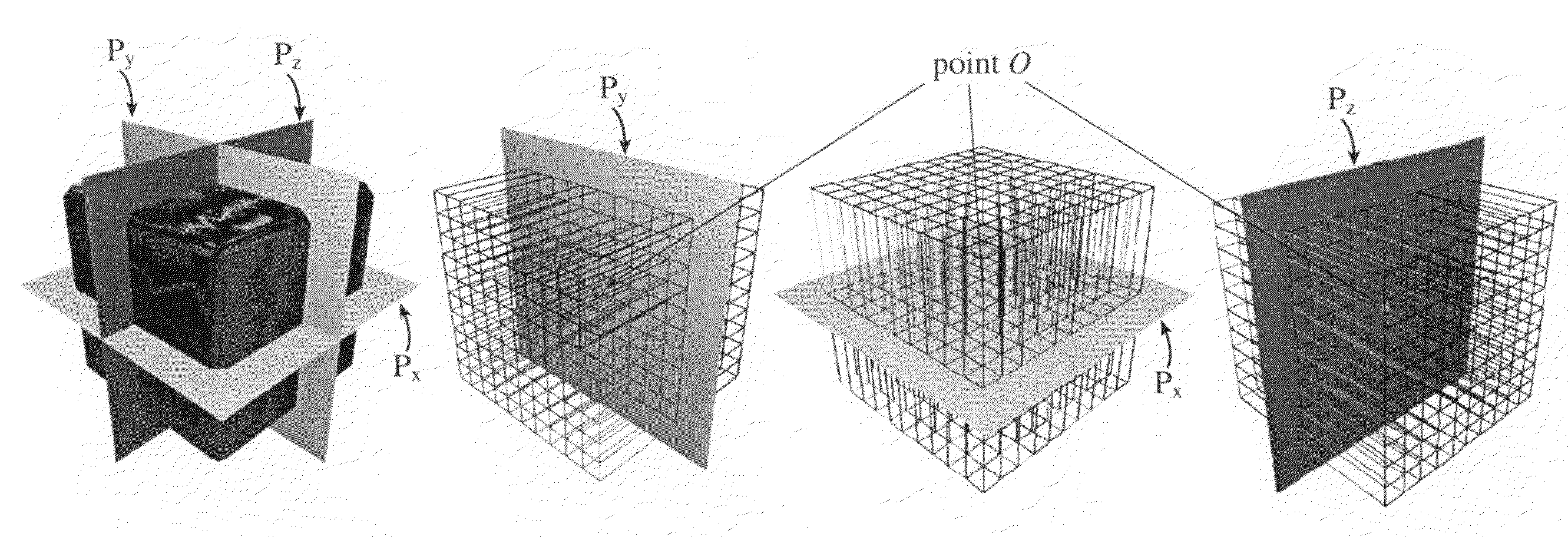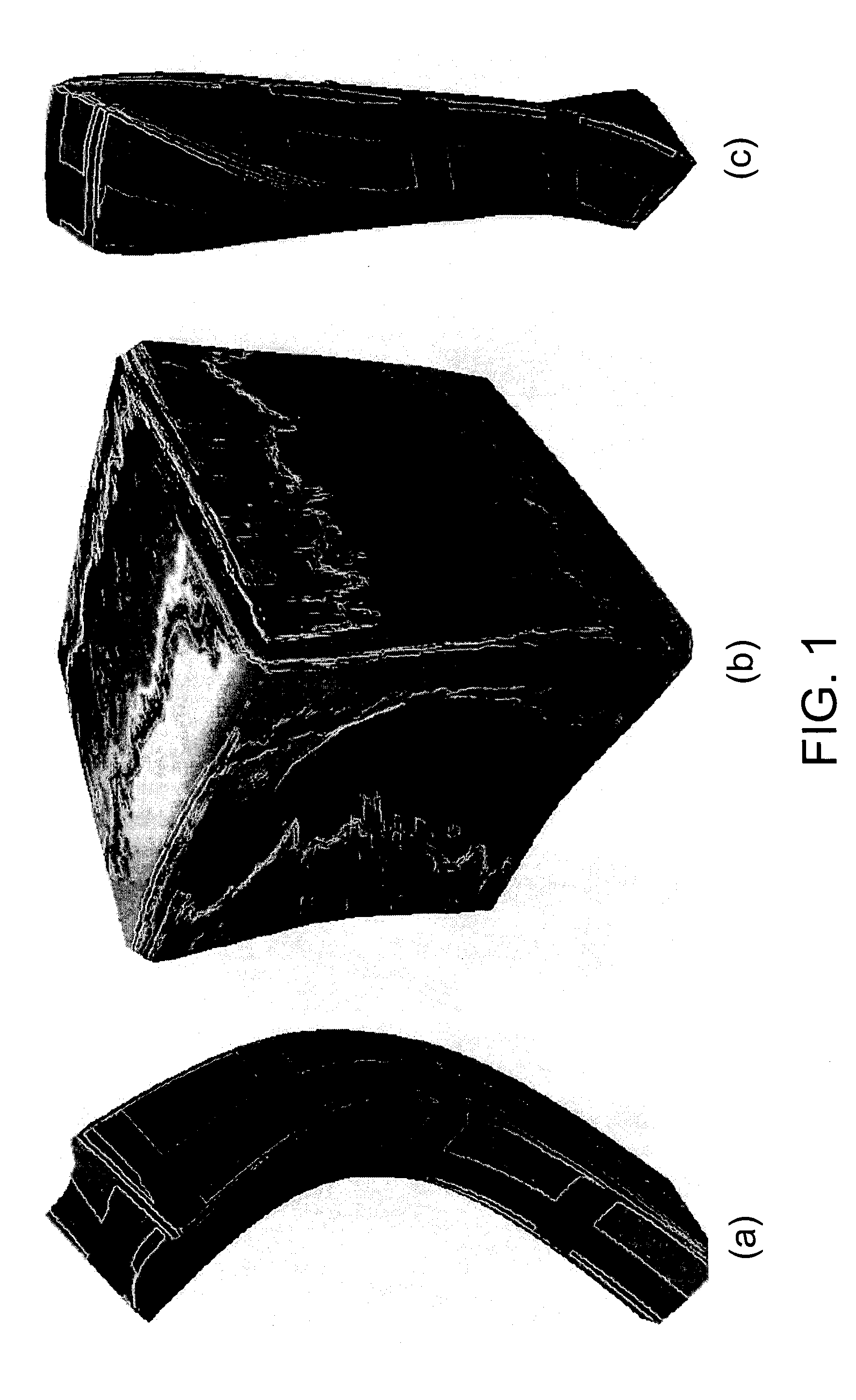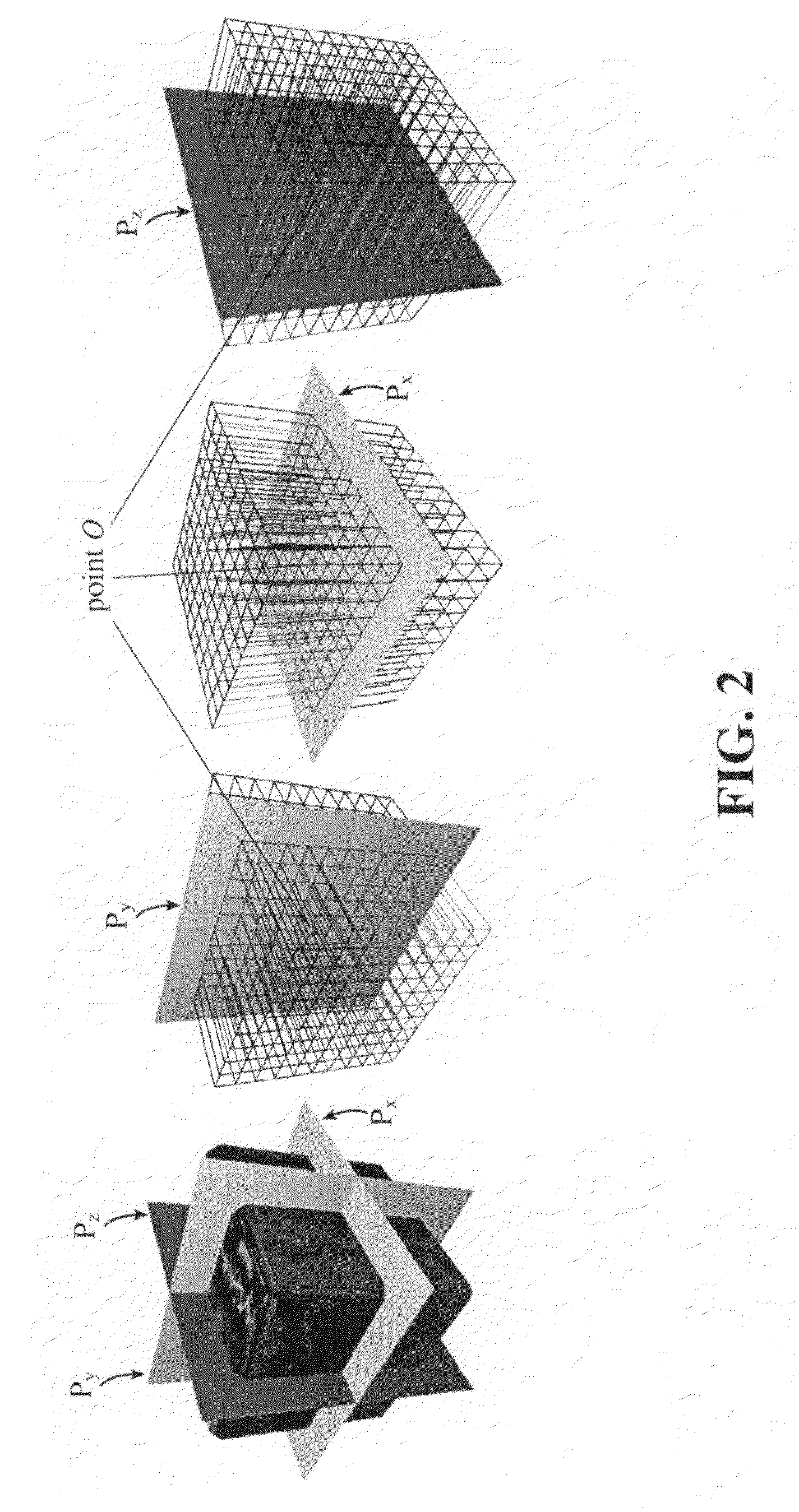Long elements method for simulation of deformable objects
a deformation object and long element technology, applied in the field of deformation object modeling, can solve the problems of haptically real-time rate rate requires significant computational resources and algorithmic finesse, and the precision of the results of models focusing on accuracy is limited, and the computational difficulty of modeling the biomechanics of muscles, tissues, organs,
- Summary
- Abstract
- Description
- Claims
- Application Information
AI Technical Summary
Benefits of technology
Problems solved by technology
Method used
Image
Examples
Embodiment Construction
[0039]Known methods, procedures, systems, components, as well as computing environment, may be discussed or illustrated in the drawings, description and discussion herein without giving details, so as to avoid obscuring the principles of the invention.
[0040]A survey of deformable modeling in computer graphics can be found in “A survey of deformable models in computer graphics” by Gibson et al. Exemplary teachings on deformable modeling employing different prior art methods, including the interactive methods, the “Geometric Nonlinear Finite Element Method”, and the “Boundary Element Method”, can be found in the following publications, which are hereby incorporated herein by reference:[0041]1. James et al., “Artdefo accurate real time deformable objects”, Computer Graphics, v. 33, 65-72, 1999.[0042]2. Bro-Nielsen et al., “Real-time volumetric deformable models for surgery simulation using finite elements and condensation”, Proceedings, Eurographics—Computer Graphics Forum, 57-66, 1996...
PUM
 Login to View More
Login to View More Abstract
Description
Claims
Application Information
 Login to View More
Login to View More - R&D
- Intellectual Property
- Life Sciences
- Materials
- Tech Scout
- Unparalleled Data Quality
- Higher Quality Content
- 60% Fewer Hallucinations
Browse by: Latest US Patents, China's latest patents, Technical Efficacy Thesaurus, Application Domain, Technology Topic, Popular Technical Reports.
© 2025 PatSnap. All rights reserved.Legal|Privacy policy|Modern Slavery Act Transparency Statement|Sitemap|About US| Contact US: help@patsnap.com



